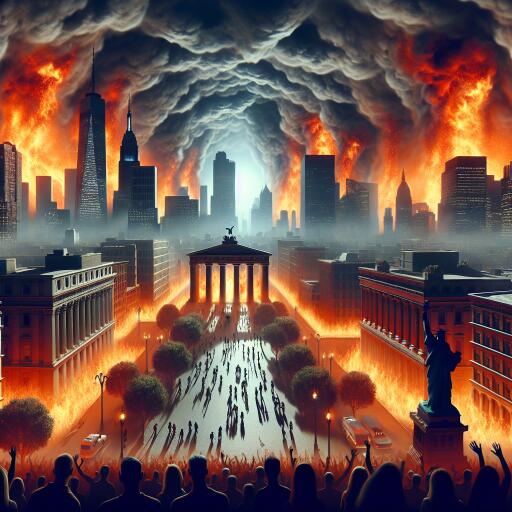
The Inferno That Took America By Surprise
California, the world’s economic giant, has for years been a frontline example of climate-induced calamity. Each passing wildfire season sets its own destructive records. In past years, vast stretches of land have been lost to the unrelenting flames, but the year 2025 has presented an unprecedented catastrophe in Southern California, branded as the most expensive disaster in US history.
Los Angeles, a city synonymous with cinematic illusions and grand dreams, has awakened to nightmarish scenes of devastation. Hillside estates and humble neighborhoods stand charred alike, drawing stark parallels to sites of international conflict in their desolation. The visual destruction has made reality indistinguishable from the disaster-themed blockbusters the city once produced.
With an alarming number of lives lost and infrastructure devastated, Californians find themselves in disbelief. The blazing inferno, fueled by exceptional winds and dry landscapes, has penetrated urban layers deeper than anyone anticipated. As homes ignited successively, creating blazing urban landscapes, firefighting capabilities have been pushed to their limits. The state’s reliance on more than 900 prisoners for fire combat — earning meager compensation for their grueling work — highlights the desperate measures needed to contain the chaos.
The fires remain alarmingly persistent, with the Palisades Fire managing a mere 39% containment while scorching over 23,700 acres. Communities facing the devastation are under evacuation advisories, and authorities continue to work vigilantly to quell secondary dangers like landslides and debris movements.
Amid these challenges, the broader debate on climate change looms large. A mixture of prolonged drought, inadequate forest management, and the undeniable footprint of climate change has compounded California’s vulnerability. As the state deals with immediate destruction, a more pressing thought emerges: how to prevent and prepare for future disasters that loom on the horizon. The path taken by the nation remains contentious as political differences over climate change continue to overshadow the pressing need for a unified response.
The multiplicity of factors driving these fires includes a paradoxical hydrological phenomenon, where cycles of heavy rain followed by drought turn rapid vegetation growth into an amplified fire threat. The erratic climate patterns, increasingly exacerbated by unchecked greenhouse gas emissions, put California in a precarious state. As these fires ravage not just the land but also local economies, systemic failures in addressing climate issues have been laid bare.
Political factions are further complicating matters. Recent policy shifts propose significant rollbacks on environmental regulations, potentially undermining efforts to mitigate future disasters. The battle over these deregulatory approaches emphasizes personal responsibility over federal intervention and could leave vulnerable communities unprotected.
As Southern California continues to confront these unyielding blazes, questions about recovery costs arise, highlighting the need for comprehensive climate resilience strategies. Without a concerted effort to address the root causes of such disasters, the prospect remains grim, with ordinary citizens bearing the burden of more frequent and severe climate impacts.
Actionable solutions are crucial if there is to be hope for future mitigation. A commitment to long-term climate planning alongside significant investments in adaptation strategies is vital. Embracing systemic changes, from forest management to sustainable urban development, will form the cornerstone of resilience against climate-induced disasters.
While the flames may eventually be extinguished, the lessons from this disaster should not be forgotten. Only through conscious, united efforts can future infernos be preemptively addressed, safeguarding not just California but the entire planet from the growing threat that climate change poses.





Leave a Reply